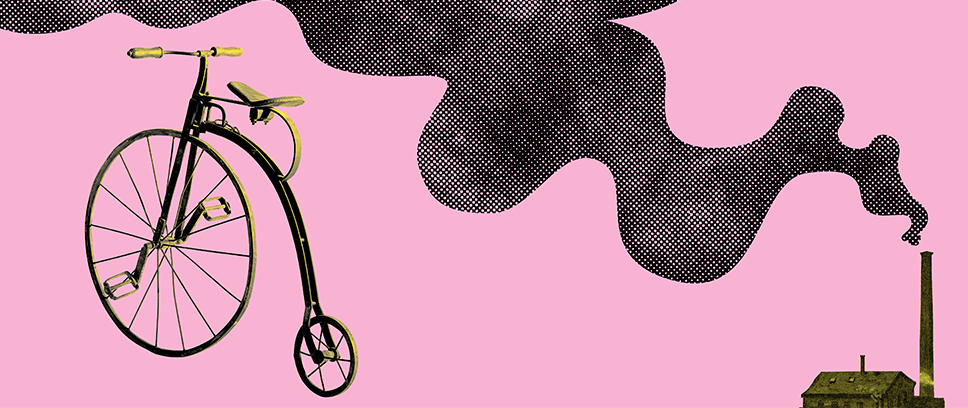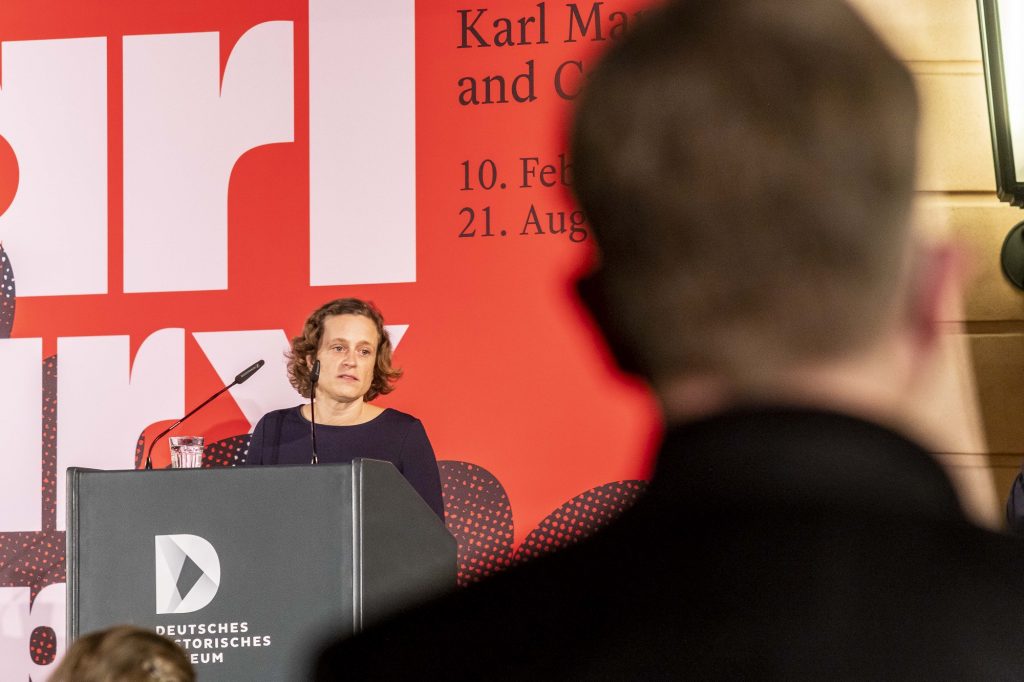
Karl Marx and Capitalism
Opening speech by Sabine Kritter
10 February 2022
The exhibition “Karl Marx and Capitalism” opened on 8 February 2022. In this context its curator Sabine Kritter spoke about the structure of the exhibition.

If anyone 20 years ago had said that the Deutsches Historisches Museum would soon be showing an exhibition entitled “Karl Marx and Capitalism”, it probably would have met with incredulous astonishment.
After the failure of “real socialism”, which had declared Marxism as its state doctrine, it seemed that not only Marxism, but Marx himself was finished. Moreover, the term “capitalism” had become discredited in the academic discourse, especially in Germany, because it was considered ideological and polemical, and seen as a kind of battle cry.
Today, however, there appears to be a certain Marx revival. In public discussions, but also in the social sciences, philosophy and the cultural world, an active debate about Marx’s theories is taking place. And capitalism is also now again considered a legitimate descriptive and analytical category. Jürgen Kocka even contends that the concept of capitalism is “in”, particularly among English-speaking historians. In other words, the discussion about Marx and about capitalism is now part of the mainstream. As it is also seen in the Deutsches Historisches Museum.
What has happened in the past few years? In 2007/2008, the financial and economic crisis shook the world and at the same time called into question previously valid certainties. Now everybody was suddenly talking about Marx again, who had studied how capitalism was prone to crises. Even the economist Hans-Werner Sinn, whom no one would accuse of being a Marxist, wrote that there was no way of getting around Marx if you want to understand the latest crisis. And a crisis leaves scars in its wake.
In view of the increasing social inequities, the enormous concentration of wealth, but also with respect to the climate crisis, many people are now asking whether capitalism in its current state is able to provide answers to the pressing questions of our day. And thus Marx, who was the first to try to sound out the mechanisms and interconnections of capitalism, is now again on the forefront as a social critic and analyst of society.
This is confirmed by a representative survey conducted in advance on behalf of the Deutsches Historisches Museum, and which gives us an introduction to the exhibition. The question of whether Marx’s critique of capitalism can still contribute to a better understanding of current economic problems was answered by 44 percent with “Yes” or “Tend to Yes”. With those under the age of 22 and those over 55 it was even 60 percent. 22 percent did not think that Marx was relevant, and one third had no opinion. At the same time, the poll revealed that one third of those surveyed saw in Marx a paver of the way to dictatorship and violence in the 20th century. A further third denied this, while the final third had no opinion.
The fact is that there is no one, no single real Karl Marx. Rather, there are many Marxes or perhaps a comprehensive, heterogenous, and partly contradictory conglomerate of Marx’s theories that have remained fragmentary and incomplete in many of their aspects. This consideration was essential for our approach to the exhibition, in which we take a historical look at Marx and capitalism.
We see Marx as a philosopher, journalist, economist and political activist of the 19th century who was primarily interested in an analysis of the social reality of his time and interested in changing it. Seven topics form the core of the exhibition:
– Topics that left a mark on the 19th century with its upheavals in Europe;
– topics that Marx analysed and which he wanted to make more comprehensible and modifiable and in which he intervened in different ways;
– topics which show clearly that Marx was more versatile and contradictory than what the Marxist theories made out of him in the 20th century;
– and topics that pose questions that are still, or once again, being asked in different ways today.
In other words, the core of the exhibition does not lie in Marx’s biography, but in subject matter that is connected with Marx. However, these topics will also be seen throughout the exhibition in connection with Marx’s life. The seven topics are: Critique of Religion and Society, Emancipation of the Jews and Anti-Semitism, Revolution and Violence, New Technologies, Nature and Ecology, Economy and Crisis, as well as Conflicts and Movements. These are all themes that for Marx come together in capitalism and which he thought about in relation to one another. This thinking in relationships was crucial for his view of capitalism, even though he seldom used the term capitalism himself, but most often spoke of the capitalist means of production.
With the exhibition’s seven topics, we hope to illustrate the mutual effects between the historical context and Marx’s own thinking and actions. This context is about events, about economic and technical developments, about conflicts, and also about debates in which Marx was involved. We show how Marx repeatedly reconsidered and revised his thoughts when he was not finished, where he recognised the contradictions, and where he was already seen critically in his time. And perhaps where he surprises us.
In the epilogue we shine the spotlight on themes that show that the sometimes contradictory and fragmentary criticism of Marx has led to entirely different interpretations of his impact and reception, and to different references to Marx.
By undertaking a historisation of Marx and his ideas, the exhibition attempts at the same time to stimulate a discussion about his topicality. For in my view, the 19th century, which for a long time has wrongfully been largely ignored, offers points of reference to the present. On the one hand, because the upheavals in the course of industrialisation enormously changed the working conditions, just as we are similarly experiencing during the transition from an industrial to a post-industrial society. On the other hand, with the globalisation in the 19th century, with the introduction of ever new technologies, with the excessive utilisation of fossil fuels, and with an economy broadly based on permanent growth, the course was then set that continues to have an impact today. And for this reason I hope that by looking back to the 19th century, the exhibition can contribute towards a greater understanding of the present.